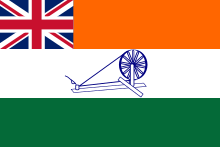
#Indian national flag colours meaning code#
However, following an appeal from Naveen Jindal, the Supreme Court of India directed the Indian Government to amend the code to allow flag usage by private citizens.The specimen is chosen carefully and every chosen representative paints a specific virtue that is unique. By law the National Flag should be made of khadi and was previously forbidden to be used by common Indian citizens other than on Independence Day and Republic Day. The National Flag is based on the Swaraj flag, a flag of the Indian National Congress also designed by Pingali Venkayya. The flag came into being in its present form at the meeting of Constituent Assembly held on Jand it became the official flag of the Dominion of India on August 15, 1947. The Indian National Flag represents India’s long struggle for freedom.

Also Read - 73rd Republic Day: ITBP Troops Brave Bone-Chilling Cold, Unfurl Tiranga at 15,000 Feet in Ladakh | Watch The National Flag is popularly called the ‘Tiranga’ which means ‘tricoloured’ or made of ‘three colours’ and has evolved from several flags which were its predecessors. The current flag that we use was designed by Pingali Venkayya who was an Indian freedom fighter and is one of the unsung heroes of Indian freedom struggle. The National Flag is the most respected national symbols and depicts the freedom of all Indian subjects and the country from any dominant foreign rule.

The National Flag is a banner, an ideal which depicts our sovereignty and our independence. The Indian National Flag has a very interesting history behind its design, colour and significance.

The Indian National Flag or the beloved tricolor that we unfurl every year proudly on Independence Day and Republic Day has come through a long process of several edits and reiterations.


 0 kommentar(er)
0 kommentar(er)
